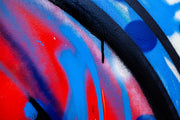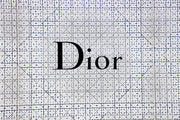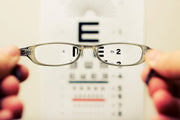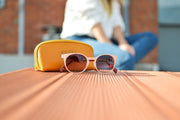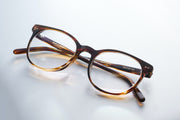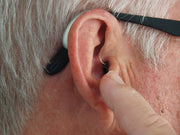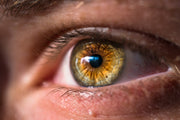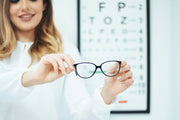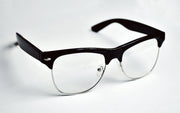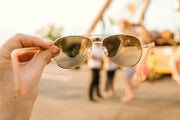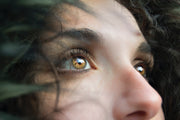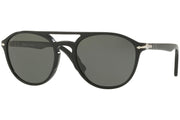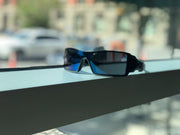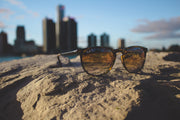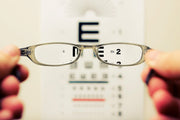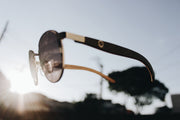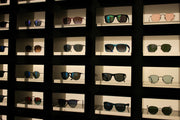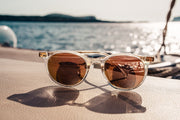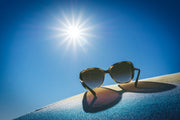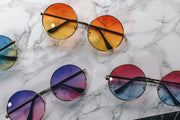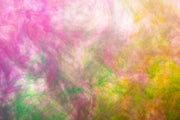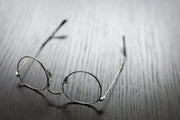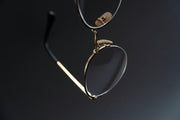Tinting eyeglasses with Rit dye is a simple and affordable way to change the color of your glasses. Rit dye is an all-purpose fabric used on various materials, including plastic. It is an easy DIY project that can be done at home with just a few supplies.
To tint eyeglasses with Rit dye, you must gather the necessary materials, including Rit dye, distilled white vinegar, a large saucepan, and a stirring utensil. The dye needed will depend on the desired intensity of the color. Use half a teaspoon of Rit dye per cup of water for a light tint. Use one teaspoon of Rit dye per cup of water for a medium tint. Use two teaspoons of Rit dye per cup of water for a darker tint.
Preparing the Glasses
Before tinting your eyeglasses with Rit dye, you must prepare them properly. This includes cleaning them thoroughly and masking parts you don't want to tint.
Cleaning the Glasses
The first step in preparing your glasses for tinting is to clean them thoroughly. Any dirt, dust, or oil on the surface of the glasses can affect the tinting process and result in an uneven tint. Here's how to clean your glasses:
- Rinse the glasses under warm water to remove any loose dirt or dust.
- Apply a small amount of dish soap or eyeglass cleaner to each lens and gently rub it with your fingers.
- Rinse the glasses under warm water to remove the soap or cleaner.
- Dry the glasses with a clean, lint-free cloth.
Make sure the glasses are completely dry before tinting them. Any moisture on the surface of the glasses can also affect the tinting process.
Masking the Glasses
When tinting your glasses with Rit dye, you may not want to tint the entire surface of the glasses. For example, you may want to leave the lenses' edges clear or the frames untinted. In this case, you need to mask the parts of the glasses that you don't want to tint.
Here's how to mask your glasses:
- Cut small pieces of masking tape and place them over the parts of the glasses that you don't want to tint.
- Use a craft knife or scissors to trim the tape to fit the shape of the glasses.
- Make sure that the edges of the tape are pressed down firmly to prevent any dye from seeping underneath.
You can also use painters or electrical tape instead of masking tape. Just make sure that the tape you use is strong enough to hold up to the dyeing process.
You'll achieve a more even and professional-looking tint by properly cleaning and masking your glasses.
Preparing the Dye
Regarding tinting eyeglasses with RIT dye, preparation is key. Before you start, ensure you have all the necessary materials and follow the instructions carefully. Below are some sub-sections that will guide you through the process of preparing the dye.
Choosing the Right Dye
RIT dye is an all-purpose fabric dye that can be used to tint plastic eyeglasses. It comes in various colors, so choose the right color for your needs. You can use a single color or mix different colors to create a custom shade. Remember that the dye's color will appear darker when the eyeglasses are wet, so test the color on a small area first to ensure you like the result.
Preparing the Dye Solution
To prepare the dye solution, you will need distilled water, white vinegar, and RIT dye. Follow these steps:
- Fill a large saucepan with 2 quarts of distilled water and bring it to a low simmer on the stove.
- Add 28.4 grams of RIT dye and five drops of distilled white vinegar to the water.
- Stir the mixture well until the dye has dissolved completely.
- Submerge the lenses or eyeglasses in the dye solution, making sure the dye completely covers them.
- Let the eyeglasses soak in the dye solution for at least 10 minutes or until you achieve the desired color.
- Remove the eyeglasses from the dye solution and rinse them thoroughly with cold water to remove any excess dye.
- Dry the eyeglasses with a soft cloth or let them air dry.
Note that the longer you leave the eyeglasses in the dye solution, the darker the color will be. However, be careful not to leave them in the solution for too long, or the color may become uneven or streaky.
Tinting the Glasses
Dipping the Glasses
To tint your eyeglasses with Rit dye, you will need a few things: Rit dye, an old saucepan, water, distilled white vinegar, and your eyeglasses. First, remove the lenses from your glasses if possible. If not, you can tint all eyeglasses, including the frames.
Next, bring 2 quarts of water to a low simmer on the stove in an old saucepan large enough for your eyeglasses to fit inside. Add 28.4 grams of Rit dye and five drops of distilled white vinegar. Stir well. Submerge the lenses or eyeglasses in the dye solution. Make sure they are completely covered by the dye.
The amount of dye you use will depend on how dark you want the tint to be. Use one teaspoon of Rit Dye per cup of water for a medium tint. Use two teaspoons of Rit Dye per cup of water for a dark tint.
Rinsing and Drying the Glasses
After submerging the glasses in the dye solution for the desired amount of time, remove them from the saucepan and rinse them thoroughly under cold water. Be careful not to scratch the lenses or frames.
Once you've rinsed the glasses, dry them with a soft, lint-free cloth. Do not use paper towels or anything abrasive, as this can scratch the lenses. Allow the glasses to air dry completely before wearing them.
That's it! With a little bit of patience and the right materials, you can easily tint your eyeglasses with Rit dye.
Finishing Touches
Once you have achieved the desired tint on your eyeglasses, it's time to give them some finishing touches. Here are a few things to keep in mind:
-
Rinse the glasses thoroughly: After the tinting process is complete, rinse the glasses thoroughly with water to remove any excess dye. This will help prevent any staining or discoloration of the lenses.
-
Dry the glasses carefully: Once the rinsing is complete, dry the glasses carefully with a soft, clean cloth. Avoid using any abrasive materials that could scratch the lenses or frames.
-
Reinstall the lenses: If you remove the lenses before tinting, it's time to reinstall them. Make sure they are clean and free of any smudges or fingerprints before putting them back in.
-
Inspect the glasses: Take a close look at the glasses to make sure there are no spots or streaks on the lenses or frames. If you notice any imperfections, you may need to repeat the tinting process or clean the glasses again.
-
Store the glasses carefully: Finally, store your newly tinted glasses in a safe place where they won't get scratched or damaged. A protective case is a good option, especially if you plan to take the glasses on the go.
With these simple finishing touches, your tinted eyeglasses will be ready to wear and look great!


